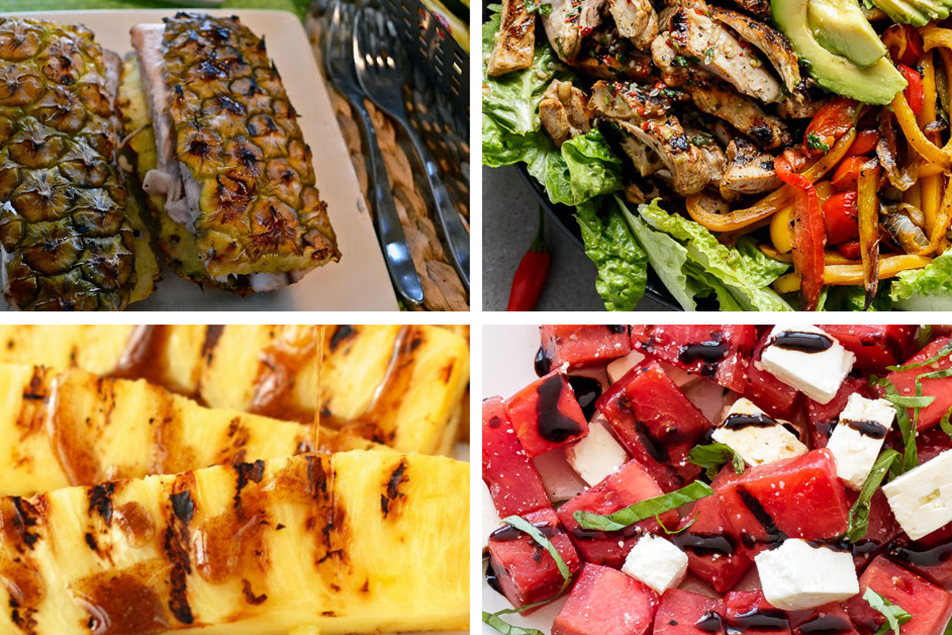
Back in March, we covered a bit about healthy options for smart grilled entrees and desserts, as well as the harmful effects of carcinogenic compounds. The response was so great, we invited Julia Walker, RDN, CDE, CD, certified adult weight management/certified diabetes educator, back to share more from her class, The Healthy Grilling Guru.
Gas vs. Charcoal
The primary concern when considering gas or charcoal grilling, is the formation of some well-known carcinogens. These carcinogens, or potentially cancerous agents, can be introduced to (or formed within) your foods by way of combustion or chemical reactions.
Polycyclic aromatic hydrocarbons (PAHs) are produced through certain types of combustion, such as the burning of coal or wood. Note that burning propane is a very low source of PAHs. You should also be wary of heterocyclic amines (HCAs), produced through a chemical reaction between heat and amino acids. Cooking at high temperatures was shown to produce heterocyclic amines in meat and fish, resulting in carcinogenic agents in tested lab animals. Gas grills cook at a lower temperature than charcoal and it’s easier to control the temperature.
The National Cancer Institute adds that while exposure to these agents has been seen to cause cancer in animals, it not clear if the effect is the same when it comes to humans. To be on the safe side, responsible grilling methods include avoiding two major carcinogenic culprits: smoke and char.
Proper cleaning
Put a little extra elbow grease into cleaning the grill before and after you use it to kill any bacteria that may be lingering. Be sure to clear off any burned or blackened bits that can add to the formation of PAHs.
Safe meat temperatures
Using a food thermometer to check whether meats and poultry are done is the only way to ensure food has been cooked to the proper temperature. Place the food thermometer in the thickest part of the food. It should not touch bone, fat or gristle. Start checking the temperature toward the end of cooking, but before you expect it to be done. Be sure to clean your food thermometer with hot, soapy water before and after each use.
Steak, a summer favorite, should be cooked to at least 145° F. Hamburgers should be cooked to at least 160° F. Pork should be cooked to 145° F and chicken to at least 165° F. For more safe grilling guidelines, consult www.homefoodsafety.org.
Put these tips to practice with these finds from Pinterest!
Recipes
Grill Fish on Pineapple Bark
from Make the best of Everything
Grilled Chilli Lime Chicken Fajita Salad
from Café Delites
Grilled Pineapple with Cinnamon Honey Drizzle
From Wine and Glue
Grilled Watermelon, Feta and Basil Salad
from Recipe Runner
